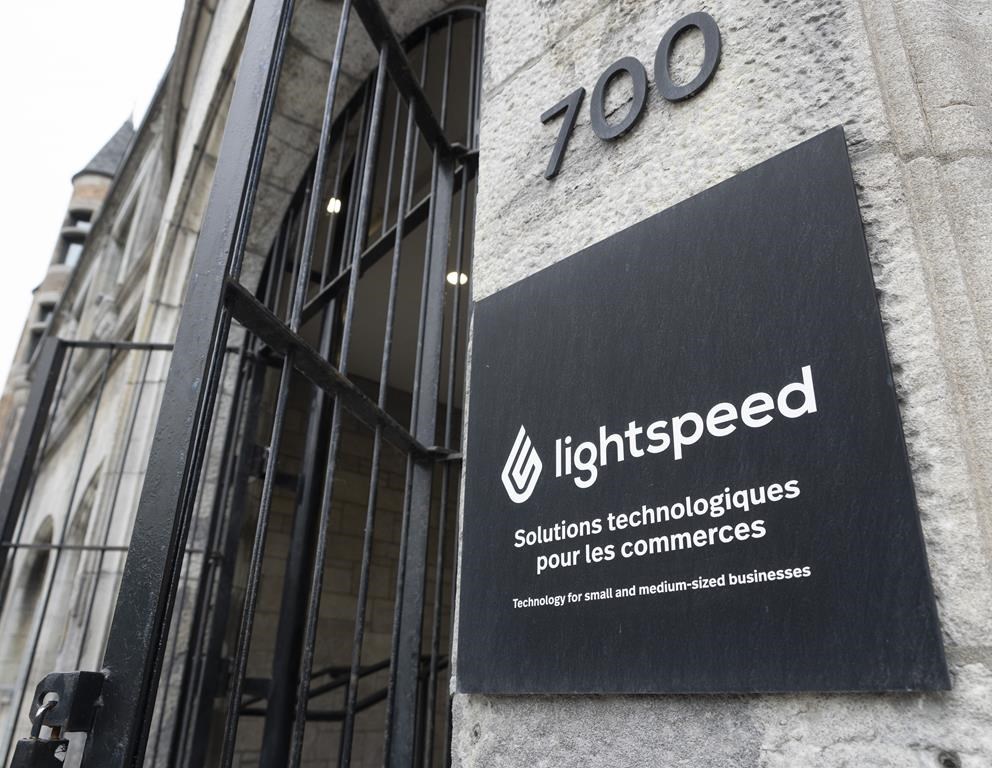Lightspeed Commerce reports US$74.5M Q4 loss, revenue up 26% from year ago

When Lightspeed Commerce Inc.’s chief executive surveys the months ahead, he sees it as “a year of two halves.”
“The first half of the year for us is going to be more costly, slower growth, but then the second half of the year for us… is going to be really strong,” Jean Paul Chauvet said in a Thursday interview.
He attributes the two halves to a moment his Montreal-based commerce software business has been working toward for years — building out and beefing up the customer base for its payments offering, which helps process online and in-stores sales.
Advertisement
Lightspeed would previously sell point-of-sale software that would integrate with whatever payment terminal merchants used, but the terminals were often “ugly” and “old” and “there’s just so far we can go without controlling the experience all the way to the customer.”
So Lightspeed began requiring new customers to sign up for payments on May 1 and the same push already launched for retail clients in North America. Next month, hospitality clients across the continent will be pushed toward payments with U.K., Australia and then merchants in Europe, Middle East and Africa.
The push means giving customers brand new payment terminals, buying back some of their existing contracts, offering better rates than what they’re paying with other providers and often, dispatching staff to help with the transition.
“Our customers don’t like change, so we’re trying to make this as easy as possible for them to get the benefits,” Chauvet said.
“For us, it’s a big move and I think it’s a big move for our customers too.”
Advertisement
Those that have made the switch have nabbed increased revenue, decreased operations cost and plenty of saved times, the company says.
Chauvet’s remarks came the same day Lightspeed a loss of US$74.5 million in its fourth quarter compared with a loss of $114.5 million in the same quarter a year earlier as its revenue rose 26 per cent.
The company, which keeps its books in U.S. dollars, said the loss amounted to 49 cents per diluted share for the quarter ended March 31 compared with a loss of 77 cents per diluted share a year earlier.
Revenue in the final quarter of the company’s 2023 financial year totalled US$184.2 million, up from US$146.6 million last year.
The increase came as subscription revenue increased to US$76.2 million compared with US$70.5 million a year earlier, while transaction-based revenue totalled US$99.6 million, up from US$66.7 million.
Advertisement
On an adjusted basis, Lightspeed says its loss amounted to zero cents per diluted share in its latest quarter compared with an adjusted loss of 15 cents per diluted share a year earlier.
Analysts on average had expected an adjusted loss of three cents per share and US$184.2 million in revenue, based on estimates compiled by financial markets data firm Refinitiv.
Chauvet was pleased with the quarter and saw it as a sign that the company is approaching its goal of reaching adjusted EBITDA break even by the end of March 2024.
“Every month and every quarter (we are) improving our adjusted EBITDA and setting ourselves up for success this year, so I’m very happy.”
He also touched on artificial intelligence (AI), which Lightspeed has been using for customer service translations. Staff can use AI to translate queries from customers and then respond in the language the question was submitted in.
Advertisement
The technology “is not perfect,” Chauvet said, but “it is far better than we had imagined, for what it’s worth, and I think it’s even very difficult for the customers to perceive that it’s a machine.”
He foresees AI being useful to helping developers code better, enhancing descriptors on menus and online stores and even processing data to help make inventory decisions, but said more regulation is needed before AI is adopted in a widespread fashion.
This report by The Canadian Press was first published May 18, 2023.
Companies in this story: (TSX:LSPD)
Advertisement
Tara Deschamps, The Canadian Press